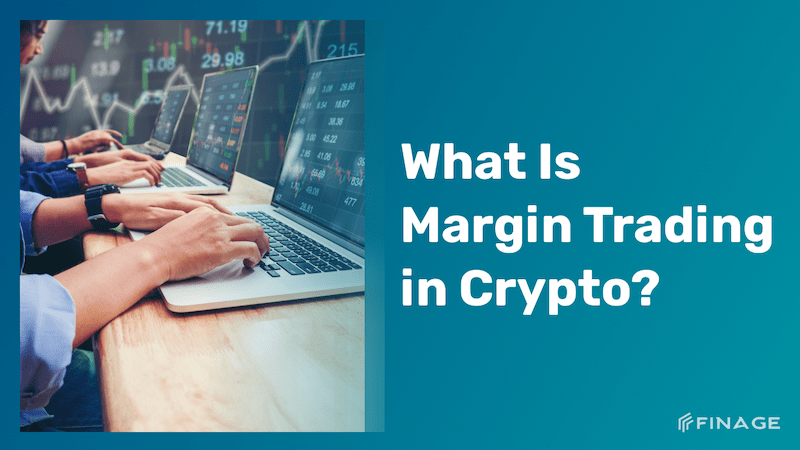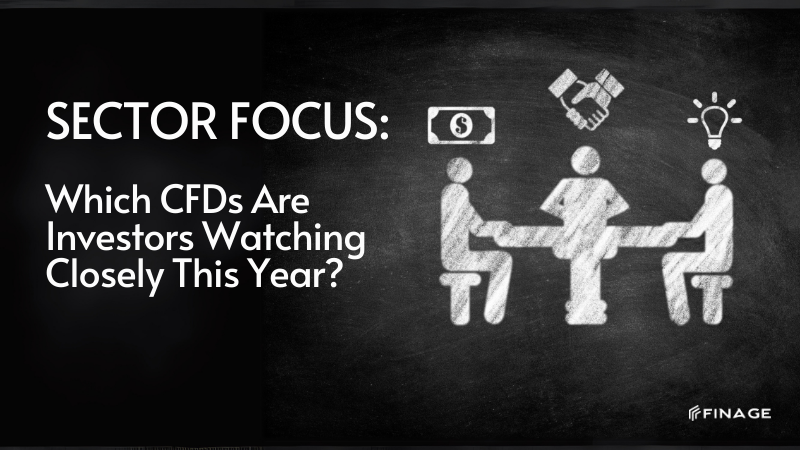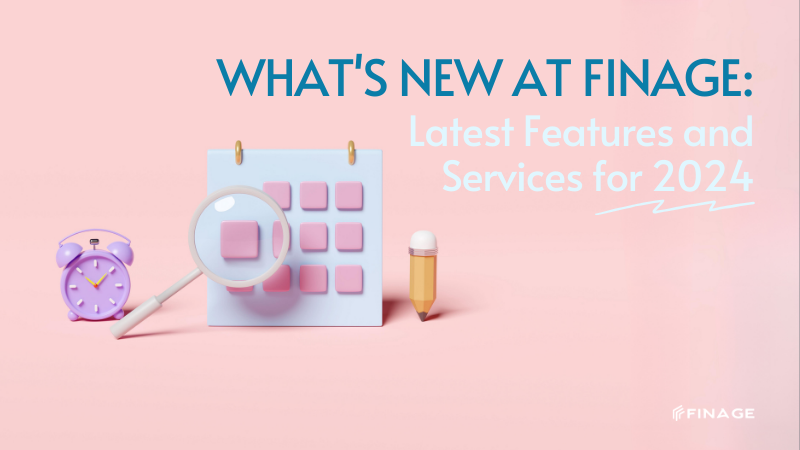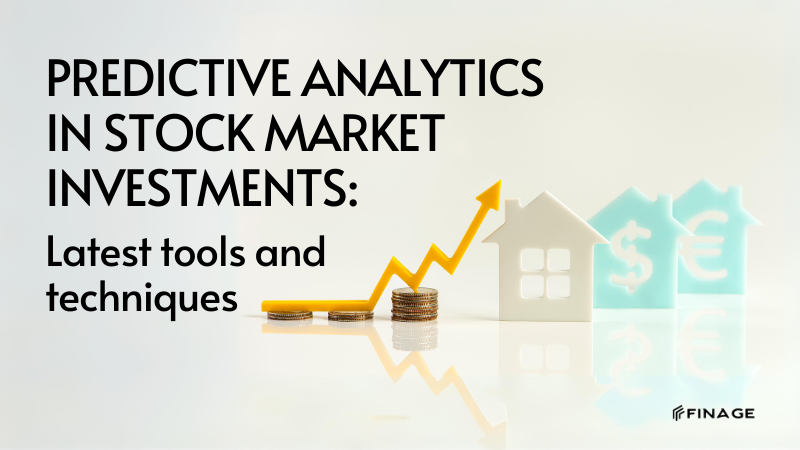Back to Blog
by Finage at March 11, 2022 4 MIN READ
Crypto

What Is Margin Trading in Crypto?
As you can understand from its name, margin trading is a type of trade that allows you to trade on the floors of your collateral by giving collateral to the system. For example, with margin trading, you can trade up to 2 or 3 times the asset you have by giving collateral. The floors vary from platform to platform.
It is possible to make high profits with margin trading. However, great losses are also possible. In the simplest terms, while it is possible to gain 3 times, you can also lose 3 times.
In margin trading, you don't really trade. Let's explain it as follows; Let's say you have 3 ETH in your hand. You think that Bitcoin will rise and you can open a long position of 9 ETH, 3 × 3, by choosing 3 ETH and leverage 3.
What is Short Position and Long Position?
If the cryptocurrency moves up after you open a long position, you will profit. As you can imagine, if it moves downwards, you will lose. If you open a short position, you will profit if the cryptocurrency moves negatively, and you will lose if it moves up. In other words, you can increase the amount of ETH you have by opening a short position for ETH in a downtrend.
Some Important Terms:
Position amount: Position Size (Logged in as 9 ETH)
Leverage: Leverage (selected 3)
Stop loss price: At what price the loss will be stopped while the position you opened is losing
Estimated open price: At what price the position will be opened
Open fee: One-time opening commission of the position
Rollover fee per 4h: In case the position takes a long time, the commission fee to be taken every 4 hours
Margin: Collateral (3 ETH at x3 for a 9 ETH position)
If we take the subject in a simpler term; Let's say we have 3 ETH and we think that the price of ETH will increase. We determined our trading strategy as 30 percent profit expectation and 30 percent maximum loss. Let's say the current ETH price is $1,000. Then we open a position of 9 ETH. For opening a position of 9 ETH, we will pay an opening commission of 0.006 ETH. Our maximum risk acceptance was 30 percent, so we set our stop-loss value to $900 with the formula (1000*3.3)/100.
If the position is closed within 4 hours, that is, if the ETH price drops to $ 900, the position will be closed automatically and 2.1 ETH will be transferred to our account (we will lose 30 percent when the price is $ 900). If the ETH price is $ 1.100, when we close the position, we opened with 3 ETH at $ 1.100, 3.9 ETH will be transferred to our account.
It is possible to make good profits with the right stop-loss values in the cryptocurrency market where price volatility is high. Of course, great losses can also occur as a result of an erroneous forecast or prediction. Leverage at a price change of 50 percent at x2 and a price change of 33 percent at x3, you lose all of your collateral and stop-out (automatic closing of the position). Therefore, it is useful to be very careful and do the calculations well.
How Does Margin Trading Work?
When a margin trade is initiated, the trader will need to commit a percentage of the total order value. This initial investment is known as margin and is closely related to the concept of leverage. In other words, margin trading accounts are used to create leveraged trading, and leverage defines the ratio of borrowed funds to margin. For example, to open a $100,000 trade with 10:1 leverage, an investor would need to commit $10,000 of his capital.
Naturally, different trading platforms and markets offer a different set of rules and leverage. For example, 2:1 is a typical ratio in the stock market, while futures contracts are usually traded with a leverage of 15:1. With regard to Forex brokers, margin trading often uses leverage of 50:1, although in some cases 100:1 and 200:1 are also used. When it comes to cryptocurrency markets, odds are typically between 2:1 and 100:1, and the trading community often uses the 'x' terminology (2x, 5x, 10x, 50x, etc.).
Margin trading can be used to open both long and short positions. A long position reflects the assumption that the price of the asset will increase, while a short position reflects the opposite. When the margin position is open, the trader's assets act as collateral for borrowed funds. It is very important for traders to understand, as most brokers reserve the right to force the sale of these assets if the market moves against their position (above or below a certain threshold).
Advantages and Disadvantages
The most obvious advantage of margin trading is that it can result in larger profits due to the higher relative value of trading positions. Apart from that, margin trading can be beneficial for diversification as traders can open several positions with relatively small amounts of investment capital. Finally, having a margin account can make it easy for traders to open positions quickly without having to transfer large sums of money to their account.
Despite all its upsides, margin trading has the obvious disadvantage of increasing losses as it can boost gains. Unlike normal spot trading, margin trading introduces the possibility of loss exceeding a trader's initial investment and is therefore considered a high-risk method of trading. Depending on the amount of leverage involved in a trade, even a small drop in market price can result in significant losses for traders. Therefore, it is important for traders who decide to use margin trading to use appropriate risk management strategies and to use risk reduction tools such as stop-limit orders.
You can get your Real-Time and Historical Cryptocurrency Data with Finage free Crypto Data API key.
Build with us today!
Featured Posts

Sector Focus: Which CFDs Are Investors Watching Closely This Year?
April 24, 2024

What's New at Finage: Latest Features and Services for 2024
April 23, 2024

Predictive Analytics in Stock Market Investments: Latest Tools and Techniques
April 22, 2024

NFTs in the Entertainment Niche & Its Role in the Web3 Ecosystem
April 21, 2024

DeFi in 2024: Exploring the Growth & Impact on Traditional Financial Services
April 20, 2024
Categories
Forex
Finage Updates
Stocks
Real-Time Data
Finage News
Crypto
ETFs
Indices
Technical Guides
Financial Statements
Excel Plugin
Web3
Tags
What is Short Position and Long Position?
Margin Trading on Cryptocurrency
Cryptocurrency Data Feeds
Real-time Data Feeds
Historical Cryptocurrency Data Feeds
Join Us
You can test all data feeds today!
Start Free Trial

If you need more information about data feeds, feel free to ask our team.
Request Consultation
Back to Blog
Please note that all data provided under Finage and on this website, including the prices displayed on the ticker and charts pages, are not necessarily real-time or accurate. They are strictly intended for informational purposes and should not be relied upon for investing or trading decisions. Redistribution of the information displayed on or provided by Finage is strictly prohibited. Please be aware that the data types offered are not sourced directly or indirectly from any exchanges, but rather from over-the-counter, peer-to-peer, and market makers. Therefore, the prices may not be accurate and could differ from the actual market prices. We want to emphasize that we are not liable for any trading or investing losses that you may incur. By using the data, charts, or any related information, you accept all responsibility for any risks involved. Finage will not accept any liability for losses or damages arising from the use of our data or related services. By accessing our website or using our services, all users/visitors are deemed to have accepted these conditions.